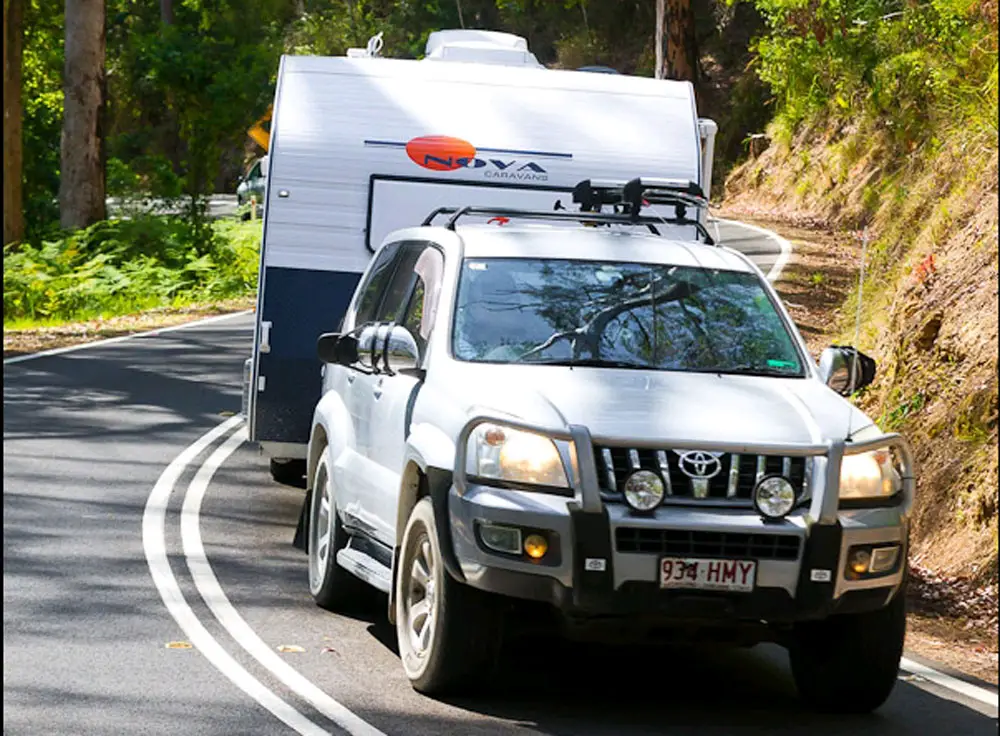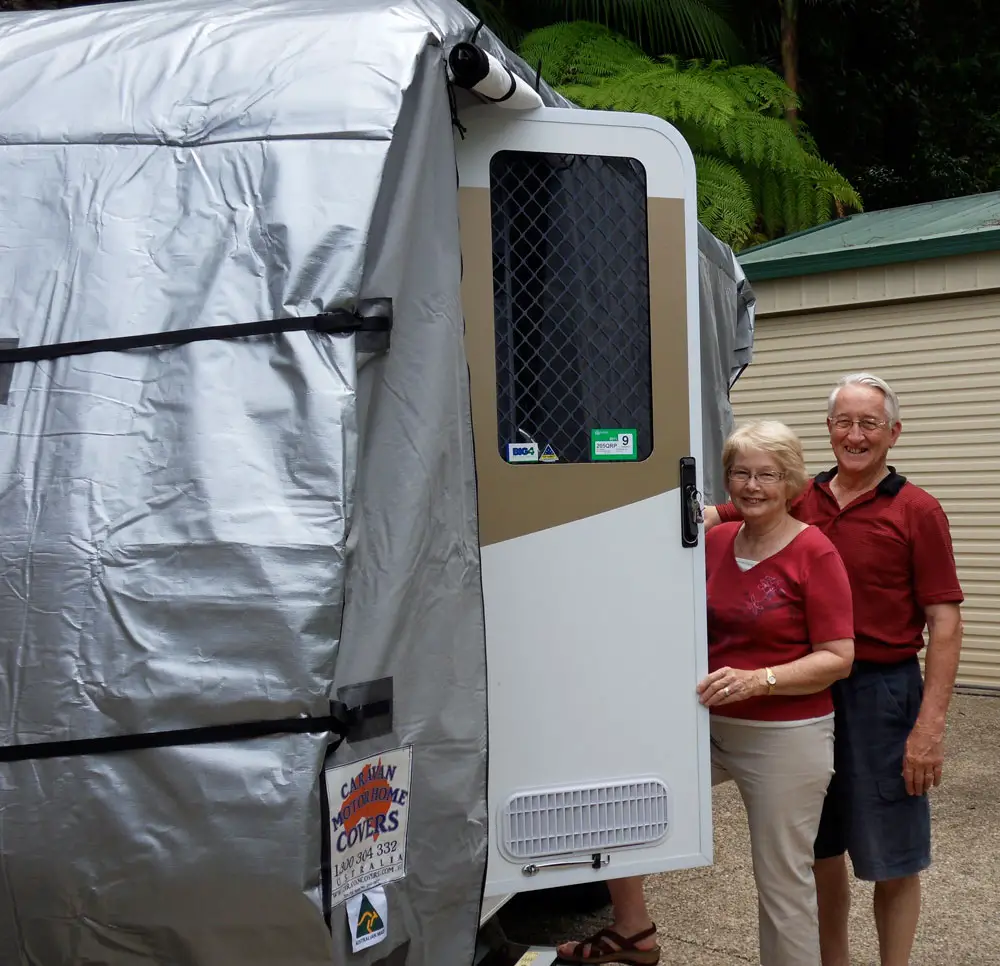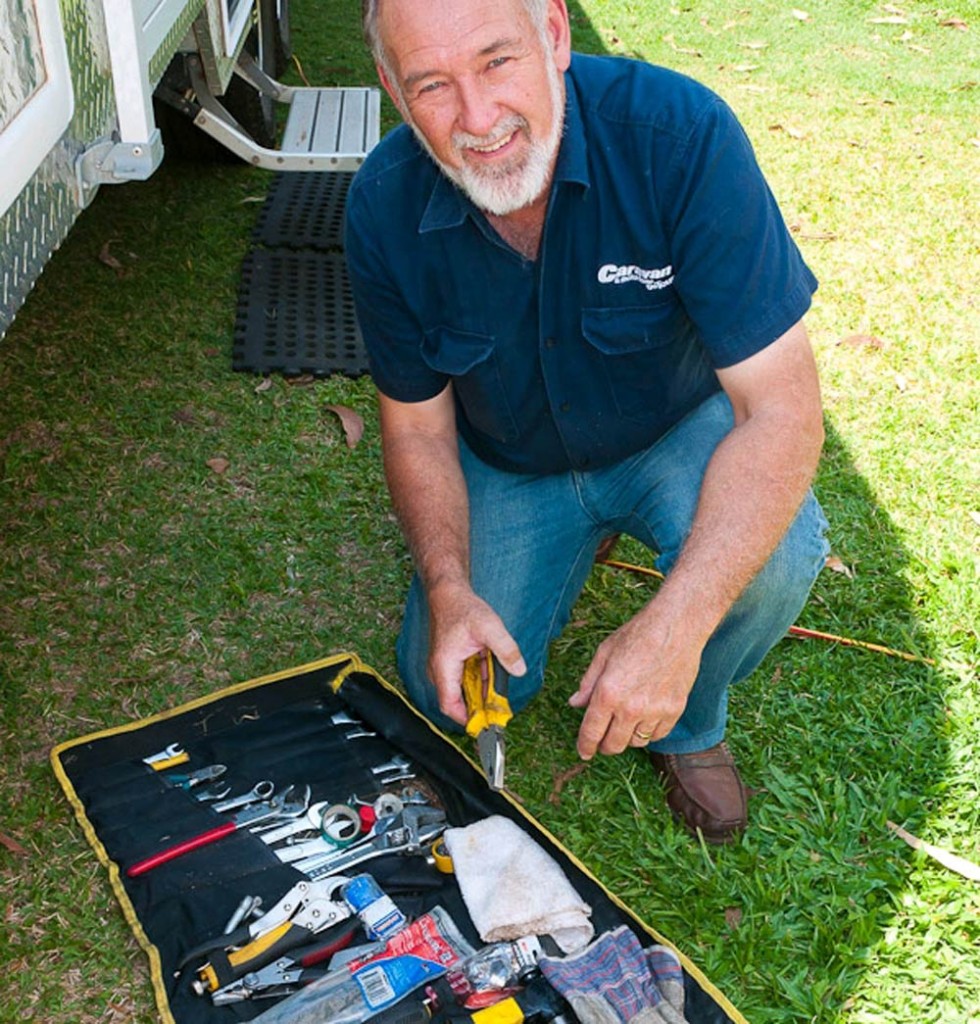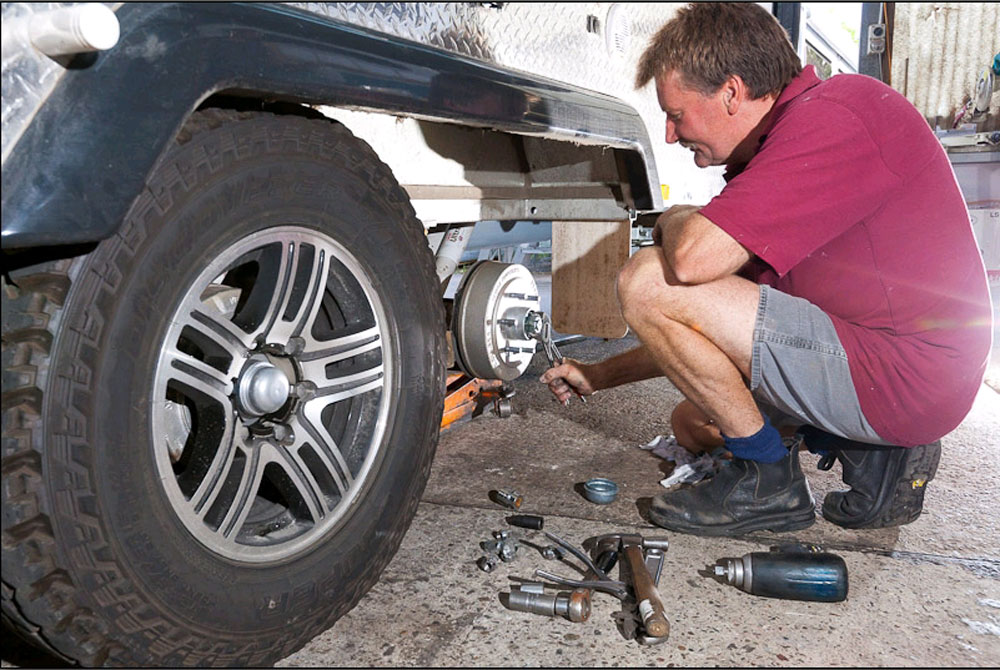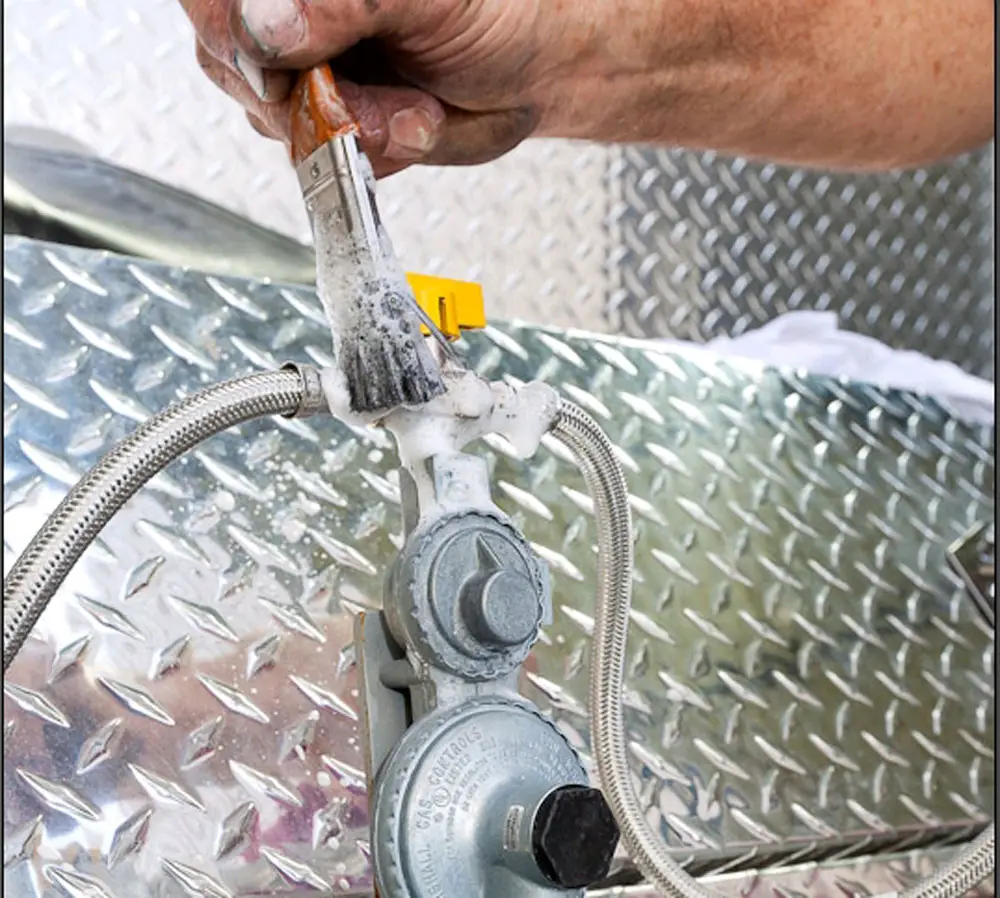WORDS BY JOSEPH VAN WOERKOM
PHOTOGRAPHY BY JOSEPH VAN WOERKOM AND CARAVAN & MOTORHOME
For most people an RV represents a significant financial investment and so it makes sense to keep a regular eye on it to catch any potential problems early on. This is because small problems have a habit of turning into much larger ones if ignored for too long and can be very expensive to repair.
To help you out we’ve put our heads together to come up with what we reckon are the ten most important things you need to do to keep your RV in tip top shape and ready for action at a moment’s notice.
1. KEEP IT COVERED
Some people are lucky enough to be able to store their RV under cover in a garage or carport when not in use. Others aren’t so lucky and their pride and joy ends up sitting outside in the weather for most of the year without being used.
The main problem with being exposed to the weather is water entry. RVs are prone to this because of the vibration they experience when on the move. This can cause stress fractures in the exterior cladding, especially at joints, leading to minute cracks which can allow water inside. If left unchecked, a water leak can cause considerable damage by rotting the timber frame and staining or destroying the internal wall coverings.
If you can’t store your RV under cover we recommend that you at least cover it with a RV cover. Don’t be tempted to cover it with a tarp, even a relatively ‘decent’ silver poly tarp, as even the best of these will start to fall apart after about six months exposure to the sun. Instead, spend the extra money and get a purpose-made RV cover. The good ones are made of a number of layers, have openings for door, are strongly UV and tear resistant and have breather vents to help reduce and prevent condensation build up inside the cover. Try a cover from Caravan & Motorhome Covers Australia or have a search online.
2. KEEP THE WEIGHT OFF
If your RV is parked for long periods, consider jacking it up to take the load of the tyres and suspension. This will prevent the tyres from deforming over time and prevent the springs from sagging under the constant load.
If parked outside, remove the wheels (including any spares) and store them under cover. If this isn’t feasible, at least cover the outside of the wheels with vinyl covers or pieces of ply wood. This will prevent the tyres from perishing due to constant UV exposure from the sun.
3. KEEP IT CHARGED
Most RVs are fitted with house batteries and most caravans over 2t GTM will also have a separate breakaway brake battery. If let unattended for a long period, these batteries will gradually go flat, even if there is no current being drawn from them. If the batteries get too flat, no amount of charging will bring them back to capacity and they will have to be renewed.
The easiest way prevent this sometimes costly problem is to use a smart battery charger to keep these batteries topped up while the RV is not in use. Smart chargers are designed to be left on continuously without harming the battery although if you are still using batteries with removable caps it’s a good idea to also regularly check the water level in the cells to ensure that the plates do not get exposed.
4. CHECK THE ANODE
Unfortunately most people don’t give a thought to the hot water system (HWS) when placing their RV is in storage. The problem is that the storage tank used in most systems is made of metal which can corrode and eventually leak if the protection anode not properly maintained.
If your RV has one of these HWS you should drain the tank and inspect the anode before placing the RV in storage for any length of time. If you’re continuously travelling, the anode should be inspected at least annually, or more often if in areas with hard water such as bore water.
As the HWS anode is easy to access you would be silly not to give it a regular inspection. Compared to the cost of replacing the HWS, the cost of the replacement anode is peanuts.
5. REPLACE EXTERNAL FASTENERS
Even if the RV is well covered when not in use, rust can develop on the fasteners used to hold external cladding or other fixtures in place. This is because to keep costs down, most manufacturers use mild steel fasteners which will rust over time. Replacing these fasteners with stainless steel equivalents will generally solve the problem for good
6. PROTECT THE UNDERBODY
The underneath of the RV often gets overlooked but should be regularly inspected for any signs of damage to plumbing, gas and electrical cabling caused by contact with the ground or impact from road debris. Especially vulnerable are the PVC fittings used in your bathroom plumbing. Ideally these should be protected by wrapping them in foam insulation where possible.
Other vulnerable places include the pipe fittings for the water tanks. For some reason these are often left unprotected even when the water tanks are protected with stone shields. If this is your situation, consider fitting extending the shields to also protect these areas as these fittings can easily be broken out of the tank. It’s not much fun to lose all your drinking water when you’re out in the middle of nowhere.
7. CHECK DOOR & DRAWER CATCHES
Door and drawer catches in RVs have a hard life due to constant vibration when on the move. Most are made of plastic and it’s common for these to break, especially when travelling on rough roads. If not attended to you could find the contents of your cupboard or drawer strewn across the floor of the caravan when you arrive at your destination.
Most important is to check the condition of the catches on the external doors. If these happen to open while travelling the results could be spectacular, expensive and very inconvenient.
8. INSPECT THE ROLLOUT AWNING
Roll-out awnings are popular because they are easy to deploy and stow but they do have to be checked on a regular basis as they are prone to wear and tear, especially on the fabric cover.
The fabric on most of these awnings is made from vinyl. While this doesn’t easily attract mould it’s still recommended to ensure that the fabric is clean and dry before storing it away for any length of time.
The vinyl also tends to suffer from abrasion where it rubs against the rafters or the roller mechanism. If caught early enough a clear patch can be applied to the affected area, otherwise a piece maybe needed to be sewn in or the whole cover replaced.
The awning frame can also suffer damage, especially in high winds. To minimise damage in windy weather use awning tensioners (de-flappers) to stop the awning flapping and tie the roller down with guy ropes and tent pegs.
Also check the condition of the travel catches when stowing the awning. If these fail and the awning deploys when travelling the results would be disastrous. In fact we recommend using supplementary restraints like self-wrapping velcro or another strap (or a belt!) near the top of the awing to prevent the awning from deploying in case the travel catch fails.
9. BE PREPARED
Most RVers that are on the road for any length of time usually travel with a tool kit of some kind. This can be very handy when there’s some small item that needs attending to like replacing a drawer catch or opening up the contacts of the trailer plug.
Most people either travel with a tool kit that has far too many tools or one that has so few tools as to be useless. It’s a worthwhile exercise to occasionally inspect your toolkit to see if you have the right amount of tools and spares for your needs. A good rule to follow is that the amount of tools and spares you need will increase as your travels become more remote.
10. KEEP IT SERVICED
Just like your car, you RV needs regular servicing, even if it only goes out for an annual outing. Safety items that need attention during annual servicing include traffic signalling lamps, wheel bearings, brake linings, electric brake magnets, hand brake adjustment, breakaway brake battery and switch operation, tyres, wheels, shock absorbers, springs, suspension rubbers, shackles and all gas fittings.
If you can’t do this servicing yourself there are plenty of RV service centres in the major centres that can do this for you at reasonable cost.
BONUS TIP!
KEEP THINGS MOVING
RVs have many external parts that need to able to free freely such as corner stabilisers, sliding windows and pop-top roof mechanisms. If these are difficult to move first ensure that the parts are clean and then apply an appropriate lubricant such as a silicon spray or WD-40 to reduce friction.

